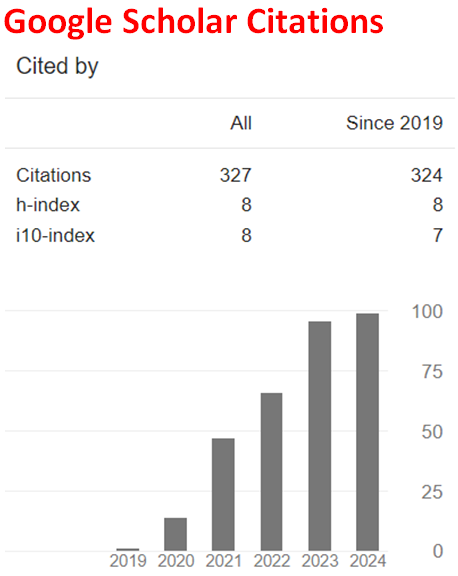The mechanism of Fleury test for morphine
Abstract
The test under study is due to M. Fleury. He used morphine dissolved, at room temperature, in 1/20 N sulphuric acid; added some lead superoxide (lead dioxide), stirred for 8 min., let stand 4 min; the water-clear liquid was separated, and a drop of ammonia was added. A brown colour occurs immediately. These experimental data indicate not a fast reaction, but a rather complex mechanism. In this communication a reaction mechanism is provided for the first time. Protonated lead dioxide is the reactive species which on interaction with the phenol group in morphine forms a mixed ortho-plumbate. Protonation of this ester does not favor further reaction. However, reaction with a second reactive species is favourable for a push-pull seven-member reaction mechanism. Enolization of the dienone formed restores aromaticity. Protonation of the Pb=O double bond in the obtained intermediate promotes a 7-atom concerted mechanism. 2,3-Dioxomorphine is formed along with an oxide hydrate that yields water and two molecules of plumbous oxide.
Downloads
References
Mandal, A. Morphine History. Retrieved from https://www.news-medical.net/health/Morphine-History
Cooley, A., & Tuson, R. (2015). Cooley’s Cyclopedia of Practical Receipts (6th ed., Vol. II, Morphia). Madrid, Spain: Hard Press Publishing. Retrieved from https://gutenberg.org/files/41957/41957.txt
Sánchez-Viesca, F., & Gómez, R. (2024). A complete and sustained organic/inorganic reaction mechanism of Baeyer’s test. World Journal of Chemical and Pharmaceutical Sciences, 04(02), 001-005. https://doi.org/10.53346/wjcps.2024.4.2.0023
Sánchez-Viesca, F., & Gómez, R. (2024). On the formation of oxydimorphine (pseudo morphine, 2,2’-bimorphine). Magna Scientia Advanced Research and Reviews, 10(02), 146-149. https://doi.org/10.30574/msarr.2024.10.2.0053
Sánchez-Viesca, F., & Gómez, R. (2024). On the mechanism of Siebold’s test for morphine. International Journal of Chemical and Pharmaceutical Research Updates, 02(01), 010-013. https://doi.org/10.53430/ijcpru.2024.2.1.0021
Sánchez-Viesca, F., & Gómez, R. (2024). On the interaction of noscapine (narcotine) with ammonium tellurate in sulphuric acid. Earthline Journal of Chemical Sciences, 11(1), 141-146. https://doi.org/10.34198/ejcs.11124.141146
Sánchez-Viesca, F., & Gómez, R. (2024). The chemistry of Hager’s test for brucine. Earthline Journal of Chemical Sciences, 11(1), 31-37. https://doi.org/10.34198/ejcs.11124.031037
Fleury, M. (1901). Reaction auf Morphin. Oesterreichische Chemiker Zeitung (Austrian Chemist Newspaper), 4, Reportage 276. Wien: Springer.
Mulder, E. (1871). Sur l’allantoine et ses derivés. Bulletin de la Societé Chimique de Paris, 16, 267-270. Via Gallica, Bibliotheque Nationale de France.
White, J. H. (1962). Inorganic chemistry (p. 305). London: University of London Press.
Lead dioxide. (2020). US National Library of Medicine. Retrieved from https://pubchem.ncbi.nlm.nih.gov/Lead-dioxide
Riesenfeld, E. H. (1950). Prácticas de química inorgánica (2nd ed., p. 219). Barcelona: Labor.
Brown, D. A. (1967). Comparative inorganic chemistry (p. 172). London: McGraw-Hill.
Bruylants, A., Jungers, J. C., & Verhulst, J. (1964). Química mineral (p. 485). Barcelona: Teide.
Lee, J. D. (1964). Concise inorganic chemistry (p. 44). London: Van Nostrand.
Luder, W. F., & Zuffanti, S. (1961). The electronic theory of acids and bases (2nd ed., p. 71). New York: Dover.
Oswald, H. R., Günther, J. R., & Stählen, W. (1968). Ueber Blei(II)oxidhydrate der Zusammensetzung 3PbO▪H2O. Helvetica Chimica Acta, 51(6), 1389-1394. https://doi.org/10.1002/hica.19680510623
Miall, S., & Miall, L. M. (1953). Diccionario de química (2nd ed., p. 515). México D.F.: Atlante.
Pesez, M., & Poirier, P. (1954). Méthodes et reactions de l’analyse organique (Vol. III, p. 227). Paris: Masson.

This work is licensed under a Creative Commons Attribution 4.0 International License.


